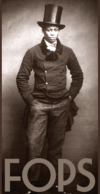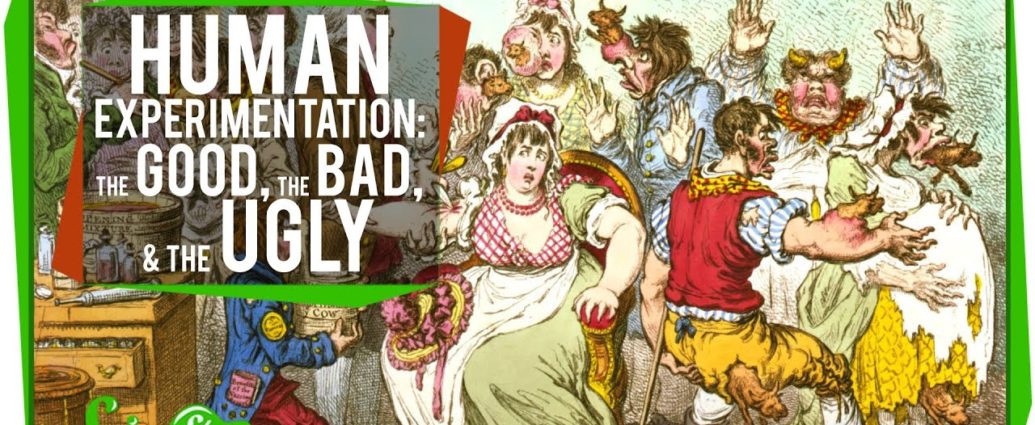 Last week we heard about a French game show in which contestants believed they were giving other contestants life-threatening electric shocks.
Last week we heard about a French game show in which contestants believed they were giving other contestants life-threatening electric shocks.
The stunt was based on the Stanley Milgram experiment, a highly controversial test carried out on normal folk who agreed to take part in a bonkers psychological study back in the 1960s.
Alas, that wasn’t the only morally questionable experiment of yesteryear. It appears psychologists could get away with anything back in the ’50s, ’60s and ’70s.
So, we present a list of the most bizarre and ethically scant experiments ever conducted.
 6. Stanley Milgram Experiment (1961)
6. Stanley Milgram Experiment (1961)
Stanley Milgram, a social psychologist at Yale University, wanted to test obedience to authority. He set up an experiment with “teachers,” who were the actual participants, and a “learner,” who was an actor. They were separated into different rooms.
The teacher, who wasn’t in on it, read questions followed by four possible answers. If the learner was incorrect, the teacher was to administer a shock with voltage that increased with every wrong answer. In reality, no one was being shocked. A tape recorder with prerecorded screams was hooked up to play each time the teacher administered a zap. When the shocks got to a higher voltage, the actor would bang on the wall and ask the teacher to stop. Eventually all screaming and banging would stop and silence would ensue. (Nice touch, guys.)
If at any time the subject indicated his desire to halt the experiment, he was told by the experimenter (in order): “Please continue,” “The experiment requires that you continue,” “It is absolutely essential that you continue.” The fourth request was, “You have no other choice, you must go on.” If after all four orders the teacher still wished to stop the experiment, it was ended.
Only 14 out of 40 teachers halted the experiment after hearing the orders from the experimenters (and before administering a large, 450-volt shock).
 5. The Stanford Prison Experiment (1971)
5. The Stanford Prison Experiment (1971)
This study tried to show how roles define behavior. Twenty-four male subjects, considered to be mentally and emotionally stable, were divided into guards and prisoners at random. The guards were given one rule: no physical punishment allowed. Other than that, they were able to run the prison as they saw fit.
On the first day of the experiment, prisoners’ homes were raided, they were charged with armed robbery, read their rights and had their fingerprints and mug shots taken. They were strip-searched and taken to the basement of a building at Stanford where a mock prison was set up.
The guards were brutal, humiliating and demoralizing to the prisoners. By the second day, prisoners were already revolting, demanding to be let out. The psychologist (who acted as prison warden) and his colleagues were also beginning to be affected by the experiment.
On the sixth day, Christina Maslach, a recent Stanford PhD, was brought in to interview the guards and prisoners. She was stunned by what she saw and demanded that the experiment be terminated.
 4. The Monster Study (1939)
4. The Monster Study (1939)
This experiment was conducted by speech “expert” Wendell Johnson and led, in part, by graduate student Mary Tudor Jacobs in 1939. Johnson believed that stuttering was a learned behavior, attributed to outside factors, such as constant criticism from a parent to his or her child for even the slightest speech imperfections.
Twenty-two orphaned children with no prior speech impediment were chosen for the experiment. Wendell’s goal was to induce the disorder in orphans. One group of orphans received praise for positive speech therapy, whereas the other group was belittled, badgered and told they were stutterers. By the end of the study, none of the test subjects in the negative therapy group became stutterers, but the experience caused them low self-esteem and irreparable damage.
 3. The Pit of Despair (1970s)
3. The Pit of Despair (1970s)
Doesn’t sound good, does it? Dr. Harry Harlow took infant rhesus monkeys who had already bonded with their mothers and placed them in a stainless steel vertical chamber device, alone, with no contact, in order to sever those bonds.
They were kept in the chambers for up to one year. Many of these monkeys came out of the chamber psychotic and did not recover. Two starved themselves to death. Harlow concluded that even a happy, normal childhood was no defense against depression. Some believe the animal liberation movement in the U.S. was born as a result of Harlow’s lunacy.
And just so as you know, “Pit of Despair” was the term Harlow used for his vertical chamber. He also had an apparatus he called “The Rape Rack.” Science!
 2. Little Albert and the White Rat (1920)
2. Little Albert and the White Rat (1920)
John Watson was a psychologist who wanted to test the idea of whether fear was innate or a conditioned response. “Little Albert,” the nickname given to the 9-month-old orphan that Watson chose from a hospital, was exposed to a white rat and a host of other things for two months without any sort of conditioning. Albert was allowed to play with the rat and showed no fear of it. To try to induce fear, Watson would make a loud sound behind Albert’s back by striking a suspended steel bar with a hammer when the baby touched the rodent.
Needless to say, poor Albert burst into tears when he heard the noise. After this was done several times, Albert became very distressed when the rat was displayed.
The poor tyke started to generalize his fear response to anything fluffy or white (or both). The most unfortunate part of this experiment is that Little Albert was not desensitized to his fear. He left the hospital before Watson could reverse the effects of his conditioning.
 1. David Reimer
1. David Reimer
In 1965, a baby boy was born in Canada. At 8 months old, during circumcision, his penis was accidentally burned off. The parents visited psychologist John Money, who suggested they have their baby undergo a sex change. His parents agreed, not knowing that the doctor’s true intentions were to prove that nurture, not nature, determines gender identity.
David, now Brenda, had a constructed vagina and was given hormonal supplements. Money called the experiment a success, neglecting to report the negative effects of Brenda’s surgery. She acted very much like a stereotypical boy and had conflicting and confusing feelings about an array of topics.
This caused a devastating tremor through the family. Brenda’s mother was suicidal, her father was an alcoholic and her brother was severely depressed. Finally, Brenda’s parents gave her the news of her true gender when she was 14 years old. Brenda decided to become David again, stopped taking estrogen and had a penis reconstructed.
Money reported no further results beyond insisting that the experiment had been a success, leaving out many details of David’s obvious struggle with gender identity. At the age of 38, David committed suicide.

